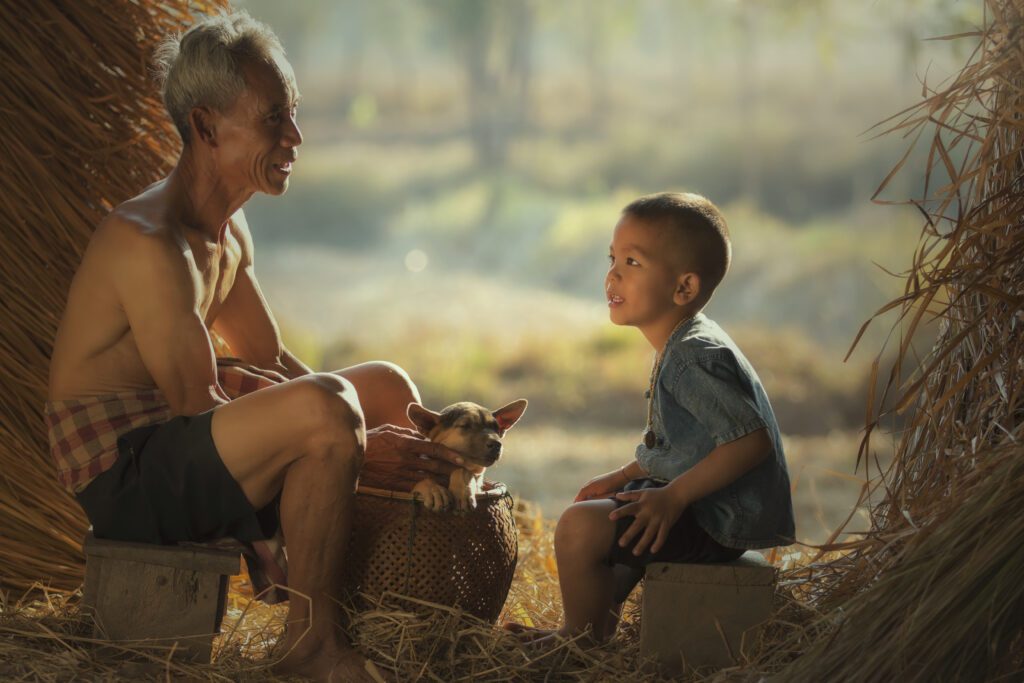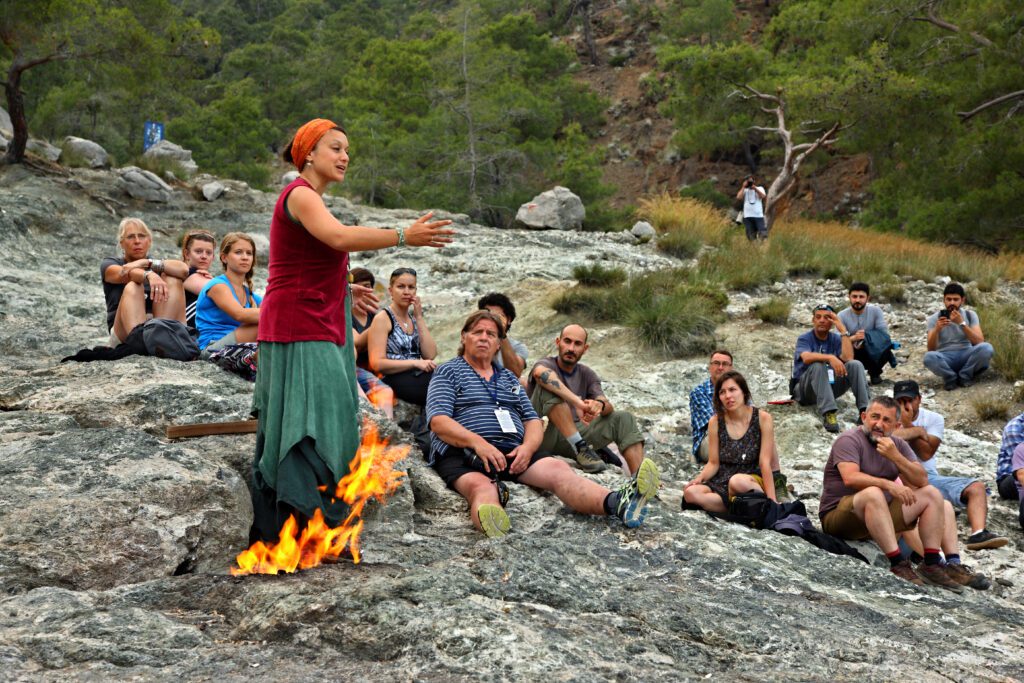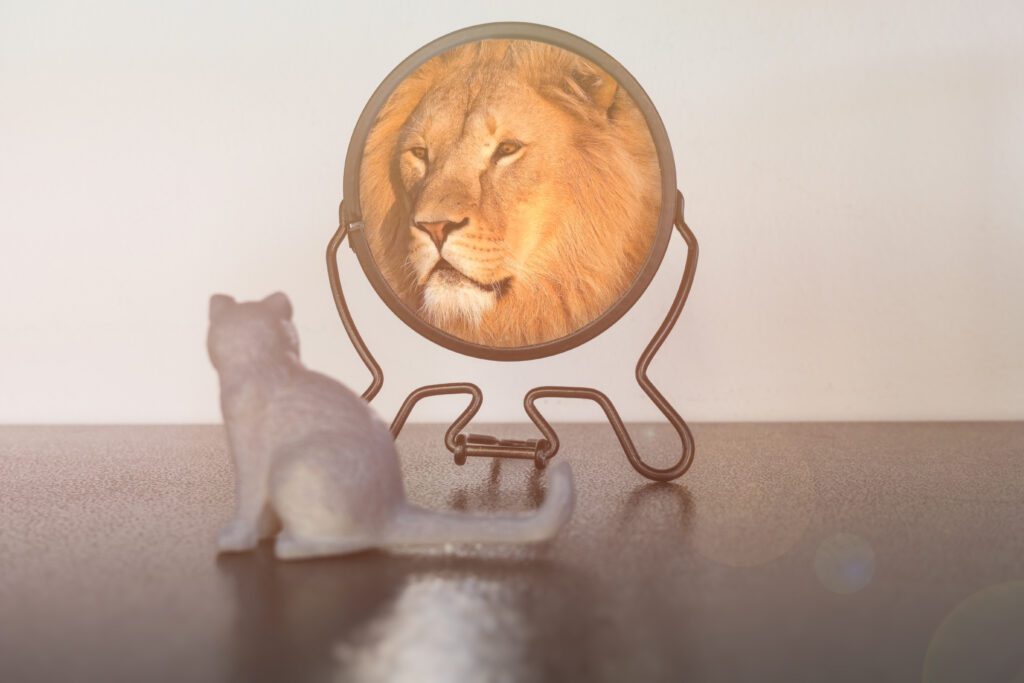People love stories. They connect us to each other and serve as bridges between generations, cultures, and beliefs. Storytelling allows the recipient to co-create with the teller and stirs the imagination with images woven into words.

What are the stories we share today? Shared stories allow us to find a commonality of being human. But what happens when the one-on-one storytelling is lost? Do movies portray the same nuance as tales told in person? What are the stories I tell myself? Are personal stories not shared lost?
All these questions arose as an international group of participants dialogued about storytelling. Seventeen participants from New York, California, Ohio, Georgia, Washington DC, Argentina, Denmark, and Brazil met on a Sunday for an hour. I will briefly touch on the points made in dialogue and allow you, the reader, the space to consider. (Note: there is silence in dialogue, no conclusion, no right or wrong, just the sharing, and building of thought. I will designate different speakers with a bullet point.)
The topic came from a growing awareness that face-to-face, personal storytelling is declining as stories come to us from television, phones, computers, and outside sources. Instead of listening to each other and asking questions, sharing a personal anecdote illustrating a universal lesson, we focus on handheld devices that isolate us from the very people around us. We become passive recipients of stories and images on screens rather than listening and creating stories through the written word or oral traditions.
In the beginning…
Oral traditions have handed esoteric knowledge through the ages. The “unwritten” word is flexible and open to learning and experiencing before it is written down. Passing from one generation to the next, the story remains surprisingly consistent. An example of this is the Bhagavad Gita.
- The fascinating thing about this is if you record the telling of the Gita in all of India’s 14 languages: when you cross-translate, they’re identical. So, through 2000 years, the stories retained precisely the same with adjectives, verbs, etc., throughout different languages. And that is amazing.
- Joseph Campbell’s collection of cross-cultural myths through time reveals how connected these stories are. The same basic “truth” is taught through the tradition of storytelling. The myths hold truths that transcend culture and time. His concept of “monomyth (one myth) is the theory that sees all mythic narratives as variations of a single great story.”
Stories told and shared throughout history contributed to human evolution.
- The back cover of a book by Yuval Noah Harari, Sapiens the Birth of Humankind (a comic book) says, “Sapien’s storytelling.” His point is that storytelling brought us forward, whether by religion or tribes and enabled cooperation and growth for 50,000 years. Homo sapiens a couple of million years ago to 7 billion today. He implies that the act of storytelling is really what makes us human.
Storytelling passes knowledge.
We have passed down basic day-to-day living knowledge from generation to generation. A connection made from one generation to the next is as simple as a family recipe shared and assembled together. Experiencing how long to let the dough rise, what it feels like when done, and a sprinkle of this and a handful of that. All shared in a kitchen warmed with the laughter of learning and sharing.

- The connection of generation to generation is weakened when we lose this sharing of stories and history, and perhaps, of people-to-people relationships. YouTube shows us how today. These relationships are fascinating, how people connect, what people think, how they share, and what brings them together.
- It’s a rich topic, storytelling, and the creation of stories. We need more familiar stories in the world. We face common things today, and common stories pave the way and empower us. Stores shared help us glimpse a common thread.
Stories illustrate some basics of a culture and generation-to-generation learning. Think of the workplace.
- So, there was this culture of going to a pub after work, and we heard all these stories. They were crucial to understanding the culture of the workplace. Some legendary funny things people had done. Some heroic things, and some mistakes, helped me understand the work culture. It helped me realize we were launching into the company’s culture, how it functions, what you could do, what you shouldn’t do, and what you could get away with. These stories played a significant role in our training to induct us into the company. It helped me to become part of that culture and learn as a youngster.
What of the storytelling archetype?
- I do believe in the Jungian concept of the collective unconscious, or I would call it conscious. But there are archetypes and symbols. Archetypes are a fundamental part of storytelling on a larger scale, part of collective consciousness.
- On a deeper level is the collective consciousness archetype. Symbols of light and dark, conflict, and the ascent of the soul, are all found in different cultures. These span many centuries and are a fundamental part of our psyche.
These are fundamental to storytelling.

- Stories have a pattern of overcoming the monster/evil, poverty to riches, a quest and search for the unreachable, a journey of exploration and return, comedy, tragedy, and rebirth. We have the villain, the hero, and the struggle to overcome.
- The Grimm Fairy Tales are a collection of German stories gathered by the Grimm brothers in the 1800s with moral lessons woven into them. Later, J. R. R. Tolkien created the world of the hobbits and Middle Earth from letters he wrote to his children when he was a diplomat. George Lucas based Star Wars on Joseph Campbell’s work, especially The Hero with a Thousand Faces.
- In Rajasthan, there was a Robin Hood who lived in the 1300s. His story was told by traveling husband-and-wife teams. The husband would unravel a scroll, which shows scenes of different parts of the story, and the wife would dance and tell the story. People would come for a whole night of this long storytelling. Little kids would stay awake, and the drums would play. Torches would burn all night. And I’m sure the Robin Hood myth was responsible for creating courage, independence, and the beautiful values that Rajasthani people have.
- Storytelling is inherent to us. When we lose storytelling a connection of generations is lost, and perhaps, of people-to-people connections.
Everything is a story.
Several of the comments in the dialogue brought out the individual story we tell ourselves. These ongoing inner dialogues shape our reality perception.
- It’s crucial to develop the story as consciously as possible. If you choose, you can create any story about yourself and the world you want.
- If you feel bad about yourself, you can change the story from “I can’t do this.” to one of curiosity. “What can I learn?” “How can I improve?” Changing the inner voice story makes all the difference.
- Another aspect of stories is an area of psychology about story development. We repeat a story like a record player. The problem doesn’t open to other possibilities when we get stuck. So, the therapist’s role is to open it up. As mentioned earlier, questions “What about this?” “What about that?” enlarge and enrich the story. Enriching stories come from a place of meaning, a place of value the person has, and these open to other perspectives and possibilities.
- Sometimes, a story becomes stuck and loops in your mind. You don’t see what is in front of you, but see something that triggers an emotional response from the past. “Truth is in the eye of the beholder.”
- When we are stuck, there is a reason. And that stuck is because of the trauma we are feeling. Cultivating the foundations of interpersonal safety allows more stories to unfold in a productive, meaningful, and safe way.
- Often the story you tell differs from others who were at the same event. Each point of view is valid for the person. Listening to and including the story expands awareness.
- It reminds me of this dialogue. We all meet on a Sunday and listen to each other; we expand our points of view and consciousness. It builds on each other and expands with inclusion.
Lost Stories
One participant’s parents were in concentration camps in Germany. She shared that those stories were not told to her.
- I want to say is, how important to listen to the stories of our parents. My parents were Jewish. One was in a concentration camp, the other escaping a concentration camp. I did not get their stories because they were not sharing them. And I didn’t have the maturity to ask them to share and listen to them at that time. So now I feel an emptiness because I missed that part. I think that that would have enriched me greatly.
- I live in New York, and I know that that was the rule to not share for whatever reason.
- Do you think that perhaps they didn’t want to relive it? Every time you tell a story, you relive it. I believe there are things I don’t want to relive.
- It’s very complex. I grew up in a Jewish neighborhood, and nobody talked about it. And now, in Denmark, I know a couple who met at Auschwitz and came out with tattoos. They had a son, and they never told him anything. I don’t know if it was to protect the children or if they couldn’t face it. But that seems to be a common thing. And you know their children have been affected by it. There are lots of deep psychological things. I don’t think there’s any resolution involved in it. How does one resolve something as horrific as that? The same holds for the partition between India and Pakistan. A lot of people experienced horrible, horrible stuff. And kids don’t know. It’s one of the tragedies of “Did it happen?” “How do we deal with it or not deal with it?”
Personal storytelling connects.
- Sharing a story about your life experience is trust. You are vulnerable. And you are bringing somebody else into your life.
- These stories confirm me-to-me and verify my self-image and my usefulness. And they play many other roles, like my stories about why I’m here and where I’m at in my life.
- As mentioned, we can also tell ourselves hurtful, limiting stories. It’s good to be aware of the story I tell myself about myself because it could be detrimental. I could be boxing myself in. So, there’s that aspect.
- I told a story for years I thought was mine. I was five at the time it took place. While sharing the story years later, it occurred to me it was not me. It was my brother. Somehow, my memory, my emotions, had experienced it as me and re-membered it in this way. Our stories become so embedded in us that we sometimes need to discern the difference between reality and memory.
- And we could see that the stories we tell ourselves are simply that. We can change that story if we’re conscious of it. In that case, they’re just a story we’re telling ourselves, and we can reframe it.
I tell myself stories.

- It occurs to me that I tell myself stories. I have my creation myth. I have my way of thinking of how it might have come about because nobody knows. By realizing that my story of creation or anything is just my perspective, but nobody knows, I can listen and hear other stories.
- We’re each going to have a different way of explaining. And we do it because it makes us feel secure and safe. One of the things we know about kids is that little children will ask you to tell or read the same story ad nauseum. Parents must read or tell that story again. But even as adults, we search for safety, reframing, and broadening our story. We learn how to do it or redo it, awakening that creative part of our mindset. It will help us in our quest for meaning and living the life we want, opening and realizing our possibilities.
The Co-Created Storytelling of Life
- Creative storytelling is fundamental in perspective-taking. If we can’t story tell, we can’t appreciate different perspectives. Today people think literally in black or white. It reveals the need to engage our imaginations and the expansiveness of our souls—the depth and breadth of our ability to exchange rich and nuanced ideas. Otherwise, things become so compartmentalized it’s hard to get back.
- Some storytelling is simply the story that we live each day. We are co-creating the story of the world around us.
- We’re creating stories every moment our children are with us. So, at each moment, we’re co-creating the narrative. And it’s not a conscious choice entirely. Storytelling is an essential core developmental capacity of a developmental stage that we lose with everything electronic. We become left-brain compartmentalized and lose the capability of storytelling which opens the imagination in a rich, nuanced way.
- Before writing, stories were oral. If we go back in time, the expansiveness of the imagination, the nuances, the French word is songe which doesn’t easily translate into English. It is the state between waking and dreaming and the richness, the subtlety of the imagination.
The dialogue opened the possibility of more to come. The importance and concern of the loss of person-to-person storytelling came up throughout the dialogue. So how do we reawaken storytelling in our day-to-day lives? Why is this important?
A lullaby one participant remembered from childhood. His mother would say it to him at bedtime.
"Tell me a story, tell me a story, tell me a story, and then I'll go to bed. You promised me, you said you would, you got to give in 'cause I've been good. Tell me a story, then I'll go to bed."

About the Author(s)
Libbie is a graduate of Ohio State University where her degree has proven a flexible base for writing, teaching, and exploring life. She facilitates the weekly Sunday eDialogue.





